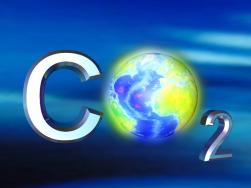Conference “After Durban, towards the Rio +20 Summit: Climate can still be saved?”
ENG | ITA
In Rome, December 15th, a conference sponsored by the Foundation Center for a Sustainable Future entitled: “After Durban, towards the Rio +20 Summit: Climate can still be saved?” took place. An initiative set in the aftermath of conclusion of the controversial Summit held in Durban as an opportunity to discuss about the “Roadmap 2050”, which is the political commitment to a true revival of policies for a sustainable development, through the implementation of a roadmap towards a low-carbon economy. The conference was coordinated by Mr Francesco Rutelli, President of the Foundation and was attended by the Minister of Environment, Corrado Clini, Hon. Mario Pirillo, rapporteur of the report “Roadmap 2050” at the European Parliament’s Industry Committee, and Prof. Alessandro Lanza and Marzio Galeotti, Professor of Economics of Environment and Energy University of Milan, members of the Scientific Committee of the Center for a Sustainable Future. Finally, Eng. Carlo Manna gave his contribution with the vision of ENEA. A few days after the conclusion of the Seventeenth Conference of the Parties (COP17) in Durban, which was attended by delegates and government representatives from nearly 200 countries, the conference discussed on what has been defined, according to many, an “avoided failure”. “It seems like nothing, but it’s a great deal if you look at the history of negotiations” on climate change, minister Clini said, emphasizing the active role played by the European Union in the achievement of that outcome. “The agreement that has managed to snatch last minute to large emitters such as the U.S., China and India with the formula” a not binding agreement to reach a binding agreement “recounts much of the difficulty of the negotiations,” according to Prof. Galeotti and Lanza. “It should never be forgotten that the climate change negotiation is inherently very complex for several reasons. The first: the danger is clearly outside the scope of any election administration”. The Durban Conference has resulted in a platform that will initiate a negotiation that shall lead to the signing of a global, legally binding, treaty for reducing emissions of greenhouse gases by 2015, which will become operational by 2020. The form has not been defined: it could be a protocol, another legal instrument or another implementation tool, but with legal value for all UNFCCC’s 194 countries, and not only for industrialized countries. It is obvious at this point the reason why several environmental organizations have recorded this result as a failure, by reading the “time extension” as the cornerstone of the agreement. It is now known that the Kyoto Protocol is not the appropriate instrument to tackle climate change, but it was decided to keep it alive by being the only international structure to be used “as a bridge to reach an agreement in 2015,” according to the Minister of ‘ Environment, Clini. It is anticipated, however, that Russia, Canada, Japan and the U.S. are out of the second phase of Kyoto. A ‘Green Climate Fund’ has also been launched, as a financial institution of the UNFCCC with legal personality and capacity, but how it will be funded has not been decided, as per the context of a deep global economic crisis. The Durban Summit was important not only from the environmental point of view but also from the geopolitical one. In fact, it has shifted the balance based on the relationships Europe – U.S. and U.S. – China in favor of large emerging economies and Europe. For the first time China, India, Brazil, Mexico and South Africa have embarked on a partnership with Europe in an alliance for the development and commercial deployment of technologies to reduce CO2 emissions and to protect natural resources and forestry. This dialogue will focus on internal policies that these economies have already started. The self-exclusion of the United States as a potential key player during the conference is consistent with the choices of Washington made in the last fifteen years, exacerbated by concerns about the upcoming elections. The possibility that the United States are left over is very high. From the conference, important considerations emerged, regarding the central role of the European Union in these negotiations and in the Roadmap 2050, the next phase of the actual Climate and Energy Package known as “20 – 20 – 20”, which pursues the decarbonisation of a 80-95% carbon emissions compared to 1990 levels of the economy, and the new challenges that await Italy. Reference was made to the importance of a “energy taxation” and therefore the need to carry on early revision of the EU directive on this issue, the possibility of ‘pave the way for a carbon tax’, the conversion to a ‘green’ chemistry and to be able to reduce Italian debt “maybe” also thanks to resources deriving from auctioning emission permits for CO2. If it is true that after the Durban Summit climate it is not yet saved, it is equally true that this is subject to negotiation, thanks to COP17.
It is now time to prepare the stage for Rio +20 in Brazil next year, which will be a first step towards a global agreement been finally effective.
View photos:
Download PDF documents:
- Resoconto convegno
- Programma Convegno
- COP17 Durban Platform-l’accordo raggiunto
- Abstract Roadmap 2050
- Q&A_Roadmap 2050
- Roadmap Energia 2050 Cosa devi sapere
- Pachetto infrastruture energetiche Commissione Europea
- Q&A Roadmap Efficienza delle risorse




